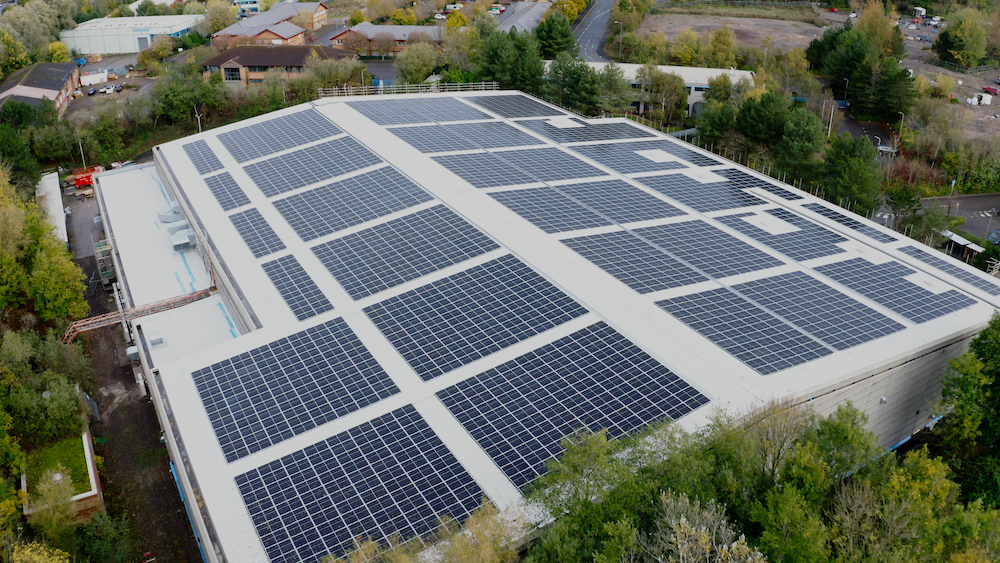
Lights, camera, sustainable action!
Posted on May 3, 2023
The climate crisis has put the spotlight on working practices throughout different sectors. As more attention is drawn towards environmental conservation, filmmakers also need to take into consideration their impact on the world around us
WORDS Robert Shepherd | IMAGES Various
The 28th session of the Conference of the Parties (COP28) will take place in the United Arab Emirates later this year, once again putting the global warming agenda on the front pages of international papers for little more than a couple of days.
We all know the COP. It’s an annual conference in which world leaders travel by private jet to a city thousands of miles away, making grand proclamations about how the rest of us should be conscious of sustainable practices – before doing it all again next time.
It’s also a time when politicians take aim at the offending sectors. Of course, some industries are bigger recidivists than others – energy and transport, for example – but film production has come in for some flak over the years, owing to the size of its very own carbon footprint.
After all, it’s an energy-intensive process requiring various resources such as electricity, water and fuel. It also requires several types of equipment – including but not limited to cameras, lighting and generators – that consume a lot of energy. The transportation of vast amounts of equipment and personnel also contributes to carbon emissions.
Jung-Min Kim, data analyst at Albert, the environmental organisation encouraging the TV and film production industry to reduce waste and its carbon footprint, suggests using local crew to minimise the number of people who must travel long distances, staying at local accommodation and taking trains over flights wherever possible. “If it’s unavoidable, economy-class flights are better than business- or first-class flights with a 75% decrease in CO2 per passenger,” he explains. “Also, using electric vehicles over diesel can result in a 43% decrease in CO2 per kilometre.”
Dean Horne, head of studio operations at Shinfield Studios, says that in film and TV production, the challenges ‘probably mirror most industries’ – in that the most pressing issues are in accessing greener sources of energy and managing budgets. “Our job is to work with our customers and ensure our facilities give them the foundations for keeping carbon emissions as low as they can on their productions.”
GREEN SHOOTS
Silverbacks like Warner Bros, 20th Century Fox and Disney have each committed to implementing sustainability measures in their production practices. Back in 2014, The Amazing Spider-Man 2 and Sony Pictures gained recognition for a green initiative throughout the course of the film’s production. The sequel in the revamped superhero franchise was handed the Green Seal award for environmental efforts and sustainable practices during production from the Environmental Media Association.
For those new to the party, like Shinfield, there’s a blank canvas to work with, as opposed to having to navigate and replace planet-unfriendly power sources. Horne explains how, as a brand-new development, Shinfield Studios has been designed to make the most of the latest sustainable production practices.
“This means that we’re constructing all buildings to meet BREEAM excellent standards,” he points out. “This is an internationally recognised sustainability assessment method for planning infrastructure and buildings. Examples of what this means in practice include things like the use of air source heat pumps and, obviously, solar panels. By integrating low- and zero-carbon technologies into our infrastructure, we expect a reduction of around 20% carbon emissions against what is typical.”
Jung-Min Kim says diesel generators are the status quo at the moment for productions looking to film on location.
“Using alternative fuels, such as HVO (waste), green hydrogen and battery generators can help to reduce carbon footprints, as well as have co-benefits like improved air quality and reduced noise pollution,” Kim adds.
Sticking with batteries, Barry Bassett, managing director at kit rental company VMI.TV, added that many companies have given up using disposable AA batteries: “We used to dispose of 1500 AA and AAA batteries annually, but haven’t disposed of any for two years now. And this was a project we only started two years ago.”
When it comes to kit, several manufacturers are investing in the green cause. Betteries has its Betterpacks and Betterlink options, providing mobile power to lighting fixtures or anything that needs to be powered when there’s a dearth of electricity. With regard to battery solutions for LED lights, the FXLion Sky Three is a 48v high-power output adapter, which can recharge up to four 26v or 14.8v batteries at once. Meanwhile, Hawk-Woods now offers a battery repair and refurbishment service, to help cut down on unnecessary waste.
Barry Bassett explains how he ‘jumped into the net zero pathway’, making a commitment back in 2021 to go net zero by 2030.
“During this process, we discovered many things and wanted to share this with the entire industry, so we wouldn’t be uniquely capitalising and profiteering by using a sustainability strategy,” he adds. “After Covid-19, I developed the Rental Sustainability Project, which now numbers around 30 companies. I started designing a website which will be live soon, and updated with everything we have learnt, spreading what we’ve discovered as the best practices to all.”
This article appears in the May 2023 issue of Definition. Read the full story here.









